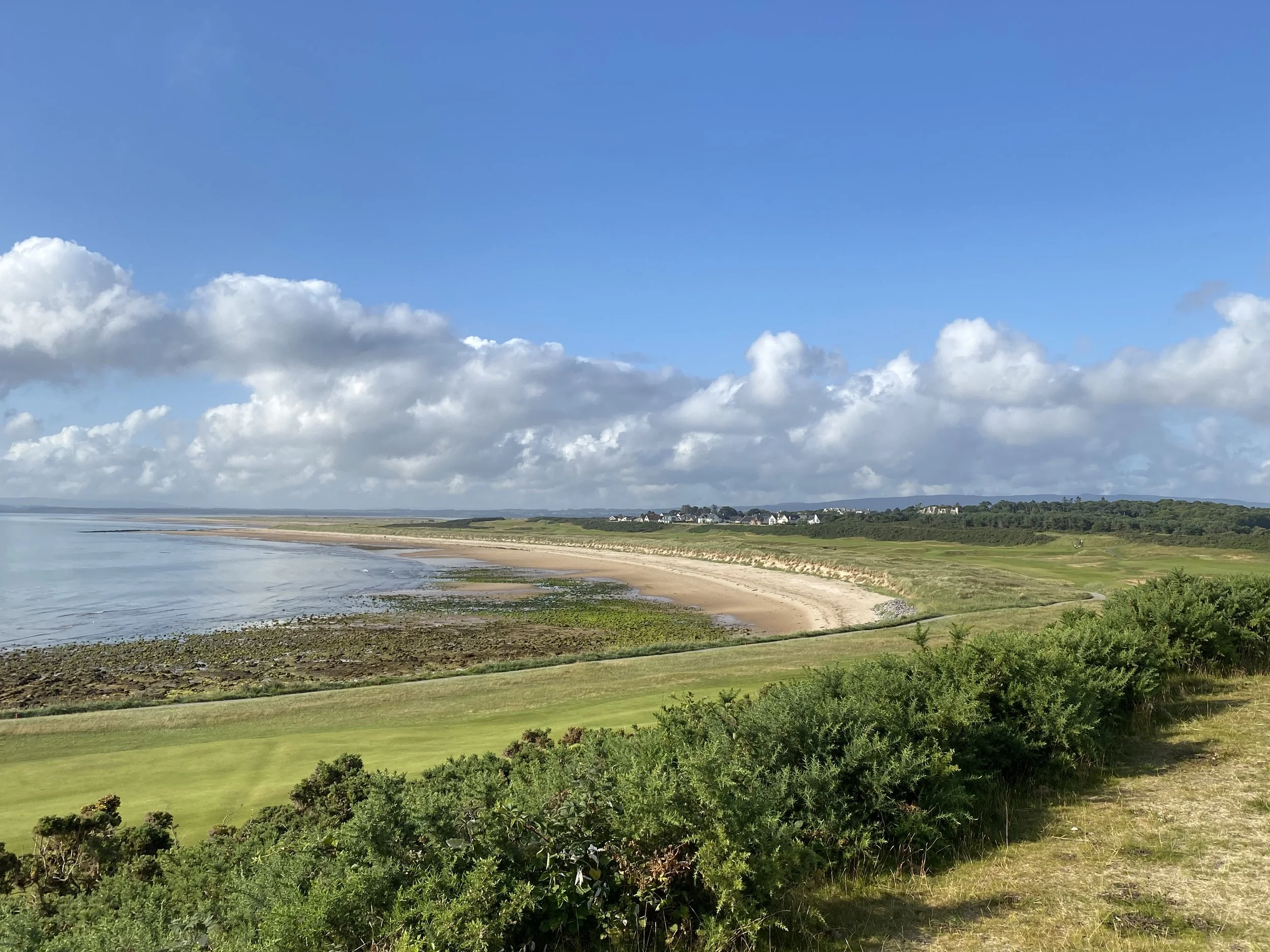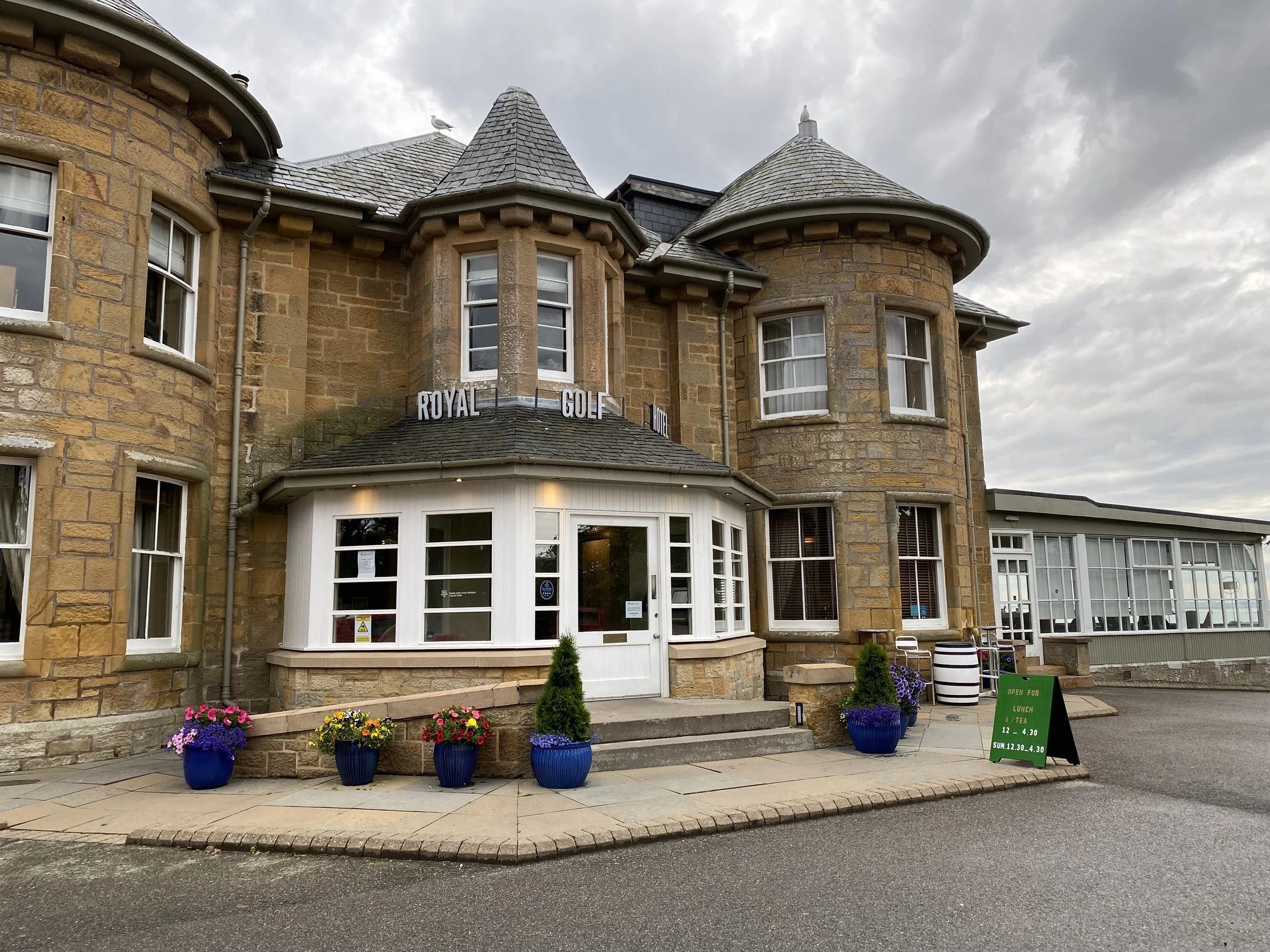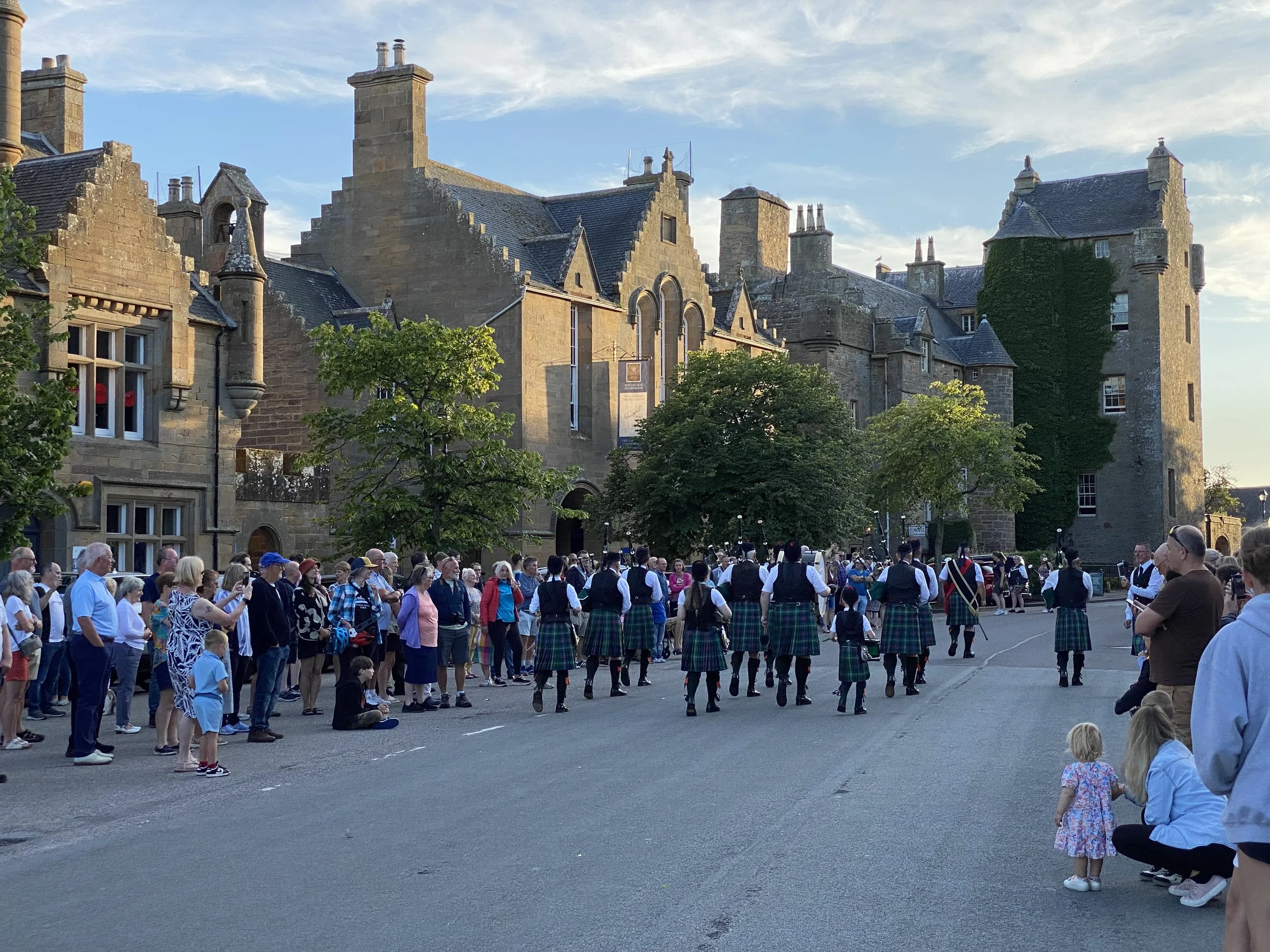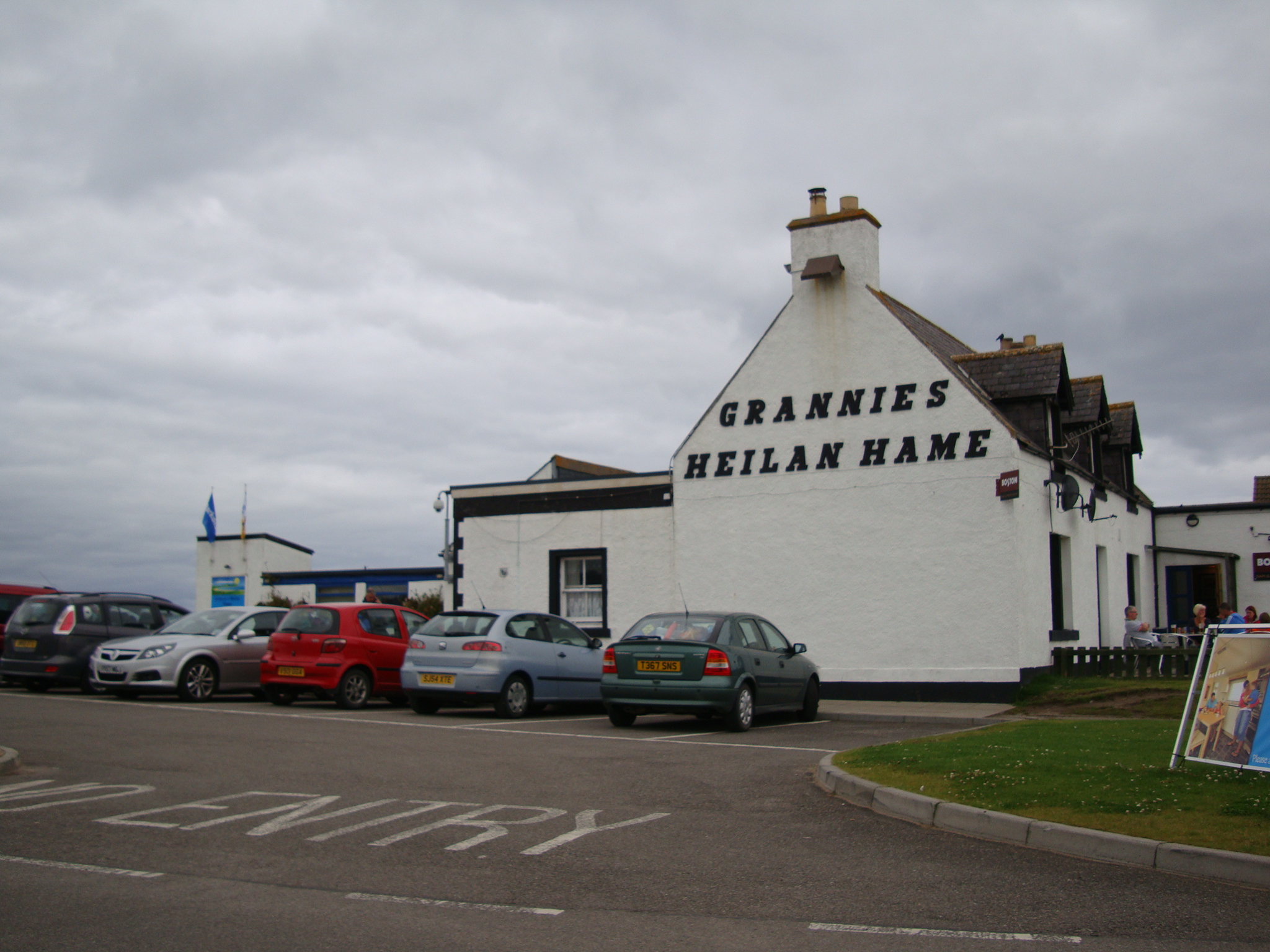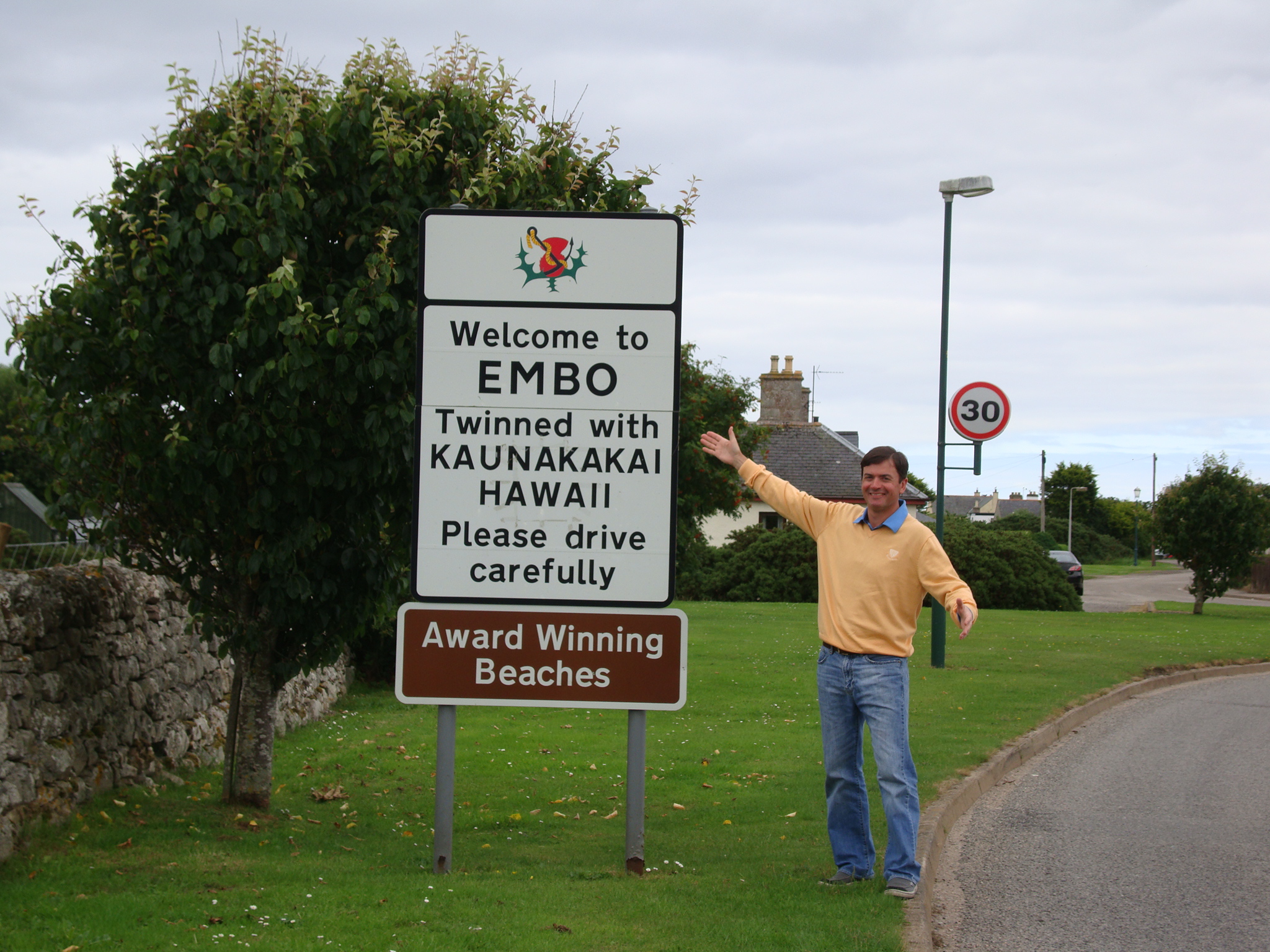Dornoch is a sensational golfing experience and not to be missed if you are coming to Scotland to play golf. I have been fortunate to play a number of courses in Scotland, and Dornoch ranks in my top five.
Nice view of the course
I played Dornoch back in 2010.
I played again during my “Highland Fling: Golfing Adventure in Scotland” in July 2025
Eight friends, all connected through our shared passion for golf and (mostly) members of Winged Foot Golf Club, traveled to the breathtaking Highlands of Scotland. This trip was the latest in a series of annual excursions, each destination offering its own unique charm and challenging courses: from my backyard of East Lothian’s “Golf Coast,” to the golf heritage of the Kingdom of Fife, and more recently the coastal beauty of Ayrshire in 2024, our travels have been filled with unforgettable experiences.
For our trip in July 2025, we ventured northwards, to tackle some of Scotland's most revered golf courses including iconic names like Royal Dornoch and (the) Nairn. Our journey would embrace the stunning landscapes and rich history of the counties of Sutherland, Ross and Cromarty, Inverness, and Nairn.
“Dornoch” in fact in Gaelic means “pebbly place”—not Pebble Beach—but apparently based on hand-sized stones that might have been used as weapons. The Castle and Cathedral were built in the 13th century. The town comprises some 1,500 people, and with the golf course so prominent and being a key point on the (North Coast 500) route, it’s perhaps no surprise that tourism is the largest business in the area.
The area is noteworthy also as the then Duke of Sutherland (Sutherland) initiated mass deportations by clearing the lands of farmers to be replaced by more profitable sheep. Many Scots emigrated from the mid-18th century to The States and Canada, as well as South America, Australia, and New Zealand—and their influence in the development of these countries has been impressive. In addition, the stage was set for the extension of British influence and the creation of the Empire, as French support for the Jacobite Charles Edward Stuart was curtailed. Culloden was also the last battle on British soil. The end of the fighting also encouraged the Scottish Enlightenment and the amazing outpouring of scientific and economic thinking and discovery. There’s a terrific book by Arthur Herman which details some of the impacts on modern society stemming from some amazing Scottish people from this period.
Ok, those days are over now and in the past they must remain—so what about this trip?
The Journey North:
My journey north began after The Scottish Open at Renaissance—where last year’s winner was Scotland’s own Bob McIntyre. A very popular winner, as you might imagine, who later made a significant contribution to the Ryder Cup win in Italy. This year, it was the relatively unknown Chris Gutterup who came out ahead of Rory McIlroy. Gutterup shot an incredible 61 in round two; he would finish third in The Open at Port Rush the following week.
More importantly, however, I left right after celebrating my twin granddaughters Maisie and Reagan’s second birthday party. There can be surely no better way to prepare for a golf trip than loading up on kids’ party food and being in the petri dish atmosphere with all those little guys running around with coughs and runny noses. All that gym work seen on “Full Swing” seems so overrated!
The 200-mile drive to Dornoch is superb. The route takes you across the (relatively new) majestic Forth Bridge and reveals Scotland's natural beauty through charming towns and the breathtaking vistas of the Spey Valley. From Edinburgh, it’s roughly 100 miles to where the Highlands begin, just after Pitlochry. A further 50 miles or so and you arrive in the Cairngorms, Scotland’s ski area, with places like Aviemore providing more marvelous scenic aspects to the trip.
The approach to Dornoch is particularly striking; you travel over three bridges—over the Moray Firth, next the Cromarty Firth, and finally the Dornoch Firth. I was very fortunate in that both the sun and the tides were out, highlighting the beauty of this part of the Scottish coastline.
You can fly into Inverness from London or the Continent or Dublin, but there is something awfully nice about that drive up through central Scotland. If you have the time, I might suggest it’s a pretty good way to get acclimatised to the country.
Golf Courses Played (and Rankings):
Royal Dornoch (4)
Cabot Highlands (8)
Nairn (20)
Brora (28)
Golspie (63)
Fortrose & Rosemarkie (70)
Tain (82)
Royal Dornoch – Iconic Links Masterpiece
What a treat it was to play Royal Dornoch! This course is not just one of Scotland’s most acclaimed, but a personal favorite—easily ranking in my top three or five courses anywhere in the world. The setting is spectacular, with the celebrated opening hole unfolding in front of the classic clubhouse, iconic flags fluttering, and anticipation building for the rest of the round.
Golf at Dornoch can be traced back to 1616, although the club itself was officially founded in 1877. Initially laid out as a nine-hole course, it was significantly extended in 1886 when Old Tom Morris was invited north from St Andrews to imprint his design on the links. Morris, a four-time Open winner and golf pioneer, declared famously, “there canna be better for gowf.” His extension created an 18-hole layout measuring just over 5,285 yards, set on the stunning common good land of Dornoch.
John Sutherland, a 19-year-old secretary appointed in 1883, was fundamental to the club’s development. A scratch golfer and course designer, Sutherland championed the course’s progress for decades and remains a revered figure—the 12th hole is named in his honor. Another local legend, Donald Ross, cut his teeth at Dornoch before emigrating to the U.S. to become one of golf’s greatest architects. You can find out more about the history of golf at the Club Here. Tom Watson and Ben Crenshaw are credited with increasing overseas, especially US interest in the course in the 1980’s. Watson, generally a revered golfer in Scotland described the course as a “natural beauty”.
The course is laid out across a vast amphitheater of natural tiered links land along the north shore of the Dornoch Firth. It is framed by windswept sandy beaches, shimmering waters, and gorse-clad hillsides that turn golden in the spring. Royal Dornoch has evolved over the years, including significant changes to the 7th and 8th holes designed to future-proof the course, yet it retains its timeless character.
Known for a demanding but fair test of golfing skill, the course rewards accuracy and creativity. The fairways offer generous landing areas but missing right can prove costly. The real challenge lies in the approach shots—greens are firm and fiercely guarded, best attacked with low bump-and-run shots or putters from short range. This nuance of shot-making cedes ground from wedge play to cunning strategy.
I thought the course was in fantastic shape throughout—firm fairways, true greens, and a beautifully tended links landscape. Each hole felt honest—whether you played well or poorly, the design rewarded good decisions without feeling unfair or punitive. There’s not a single “weak” hole. Every hole feels distinct, offering a variety of demands and stunning natural beauty. From the very start, the round sets a memorable tone, inviting players into the rhythm of world-class links golf. A stand-out early test, hole 3, with its traps along the right, offers both challenge and the first sweeping vistas that showcase Dornoch’s natural beauty. The short holes—particularly the sixth—are demanding, with elevated greens, narrow approach windows, and cleverly guarded fronts. A left-to-right slope on the sixth green means anything missing on the right runs into deep trouble. The new design on the seventh presents a long, visually stunning challenge, especially daunting into a Highland wind.
Holes 10 and 11 transition you back toward the heart of Dornoch, while the twelfth—a dogleg par five—offers more generosity than first appears and a real birdie opportunity. A delightfully tough short par three, 13 green is encircled by banks on three sides, rewarding only the most accurate tee shots. The 14th ("Foxy"), often considered Dornoch’s signature, is a long, bunkerless par four with five “fingers” of rough jutting into the fairway. It demands excellence from tee to an elevated green framed by classic run-offs, epitomizing links golf’s blend of subtlety and difficulty. Sixteen punishes any drive straying long and left—balls end up in a quarry, out of bounds. Seventeen gives players a strategy conundrum: lay up or go for the riskier, more direct line for a look at birdie, with an elevated green adding nuance. A formidable par four to conclude, with a tough approach—rendering a four hard-won and a birdie a true achievement on your final day.
The closing holes maintain intensity, with risk-reward options that test decision-making under pressure.
The clubhouse carries a warm Highland hospitality and is due a substantial upgrade soon. Currently, its bar and pro shop provide a cozy atmosphere, but a new facility is promised to better match the world-class nature of the course itself.
Friends from Muirfield and Luffness joined us for two-ball foursomes and afternoon rounds, interspersed by lawn bowls and excellent company. Wine and cheese appeared magically, rounding out a day where golf flows seamlessly into camaraderie.
Summary & Overall Impression
Royal Dornoch sparkles as a harmonious blend of design, immaculate conditioning, and unspoiled Highland setting. It is a must-visit for any serious golfer. Each hole offers a unique challenge and joy, and the course strikes a perfect balance between fairness and formidable test.
Combined with the warm local hospitality and the pleasures of post-round socializing, Royal Dornoch delivers not just a round of golf—but a deeply memorable experience to savor.
Conclusion
The Highland experience is truly unforgettable. Royal Dornoch stands out and is a sensational course that should be on everyone’s bucket list; Tom Watson himself described it as a “natural masterpiece.” Beyond such a well-known course lie hidden gems such as Golspie and Fortrose that make for a really complete Scottish golfing experience.
Scotland’s golf regions each have their stars—Fife and St Andrews, East Lothian around Gullane, Ayrshire with Prestwick and Turnberry, and finally the Highlands, anchored by Royal Dornoch. A golfing trip through each area could easily take two delightful weeks.
Trip Organization & Practical Details
Dining Highlights
Dornoch Castle Hotel – The Vault
I managed to book The Vault, a wonderful private dining area housed in the former dungeon of the castle. It was the perfect setting to conduct our usual end-of-season awards ceremony. Although Ben H, who normally runs this tradition, missed the trip this year, we celebrated with multiple toasts in his honor. The Vault seats up to approximately 10 people. The service was excellent, and the food was superb: starting with a charcuterie board, followed by steak with vegetables, and finishing with a very nice dessert.
Highland Spice, Dornoch
Skeptical about non-city curry houses, I was pleasantly surprised by a hearty chicken tikka and fresh naan offered at reasonable prices.
Luigi’s, Dornoch
This cozy Italian restaurant impressed with a perfectly creamy burrata starter and a halibut main course that reflected a kitchen of high standards. Not cheap, but worth it for quality food and a good wine list.
Marine Hotel, Brora
Located just steps from the golf course, we dined here after a windswept round. The maître d’, a South African by way of Scotland, helped us navigate the menu. My ribeye steak was excellent, and the service matched the food. I would thoroughly recommend this hotel. Although I didn’t see the rooms, I expect them to match the high standard of the dining experience.
Nairn Golf Club
Set overlooking the 1st and 18th holes of the golf course, the club offers pleasant dining with quite good food. However, the service level could have been improved significantly.
Royal Dornoch Golf Club Clubhouse Dining
Offers informal dining with spectacular views overlooking the 1st Tee of the Championship Course and the Dornoch Firth. Their menu emphasizes locally sourced, freshly prepared dishes celebrating the Highland larder. Service could be better.
Trip Organization & Practical Details
Accommodation
We stayed in self-catering apartments at The Royal Dornoch Hotel. Amy, who was terrific, arranged most of the golf and accommodation for our group.
Each apartment comprised two bedrooms—one with an ensuite—and a large, open-plan kitchen, dining, and lounge area. They were very well appointed and equipped with modern appliances, including a washer-dryer, cooker, hob, fridge, and freezer. The generous living spaces were perfect for relaxing after a day on the links.
Booking through the Royal Dornoch Hotel was hassle-free, thanks to the cheerful and efficient staff who also reserved our tee times—a huge help.
While the apartments were excellent, the main hotel building itself showed signs of wear: chipped paint, tired wallpaper, and indifferent restaurant service somewhat detracted from the overall experience. For comfort and peace of mind on a golf trip, I would recommend choosing these apartments over the main hotel accommodations.The main hotel felt dated, with tired decor and average restaurant service, but the apartments were excellent.
Transport
Amy at the Royal Dornoch Hotel provided me with the contact details for David Purvis, and I would highly recommend his services.
David proved to be an incredibly reliable driver with excellent local knowledge. Always punctual, professional, and easy to communicate with, he made getting to and from the various courses and dining spots simple and stress-free.
Whether you're coordinating group travel, airport transfers, or day trips across the Highlands, David is a great choice for anyone visiting the area and wanting dependable, friendly transport services from a true local expert.
Planning Tools
Highland Golf was an outstanding resource describing nearly 30 courses.
VisitScotland has a helpful website that provides lots of useful information on the area, places to stay, and things to do. In fact, the history of the Highlands is pretty interesting, as events in the 18th century had global ramifications which influence us today. Within Scotland, the Clan system collapsed and the region saw the imposition of what is called “the clearances”—genocide in another way—after the Battle of Culloden in April 1746 ended the Jacobite rebellion. The House of Hanover—the current King’s family—was restored.
Slight Detours
For a fun morning or afternoon excursion, it’s possible to take a very small ferry from Nigg across to Cromarty. The ferry is tiny, so I would strongly advise not taking your car if it is an SUV or large vehicle, as you will have to reverse your vehicle off the ferry upon arrival.
Cromarty itself is a delightful little town with a charming array of restaurants, galleries, and shops. One highlight is Soutar Creek, which was closed when we visited but is reputedly well worth a visit. The harbor area is picturesque, and a very good coffee shop right at the waterfront provides a pleasant spot to relax and watch the boats.
If you find yourself in the Tain area, I recommend a visit to Tain Pottery, which produces absolutely beautiful pottery, showcasing local craftsmanship. Additionally, the nearby Glenmorangie Distillery offers fascinating tours. We enjoyed a very nice afternoon there—it’s a perfect way to experience one of Scotland’s famous whisky houses close to the golfing action.
There are few landmarks for me:
We used to go to Embo for our summer holidays and Grannies was there back then, and apparently survives to this day. It's also fun to think somewhere like Embo would be twinned with a City in Hawaii. The beaches are great in Embo, however...
There are many great and fun golf courses in this neck of the woods. Here are some links to a few:
Aigas Golf Club
Alness Golf Club
Aviemore Golf
Boat of Garten Golf Club
Brora Golf Club
Castle Stuart Golf Links
Durness Golf Club
Fortrose Golf Club
Golspie Golf Club
Highland Golf Links
Invergordon Golf Club
Maverston Golf Course
Nairn Golf Club
Nairn Dunbar Golf Club
Royal Tarlair Golf Club
Strathpeffer Golf Club
Tain Golf Club
Tarbat Golf Club
The Carnegie Club Skibo Castle
Traigh Golf Club
Ullapool Golf Club
Wick Golf Club



